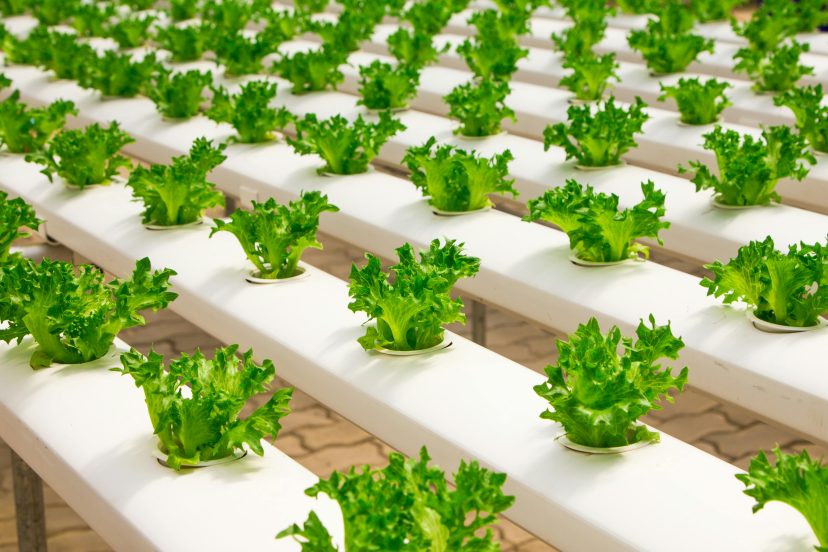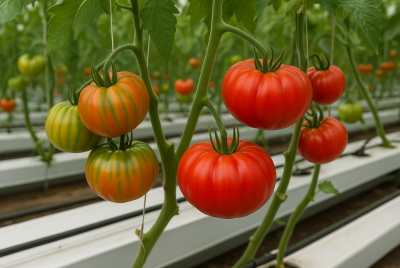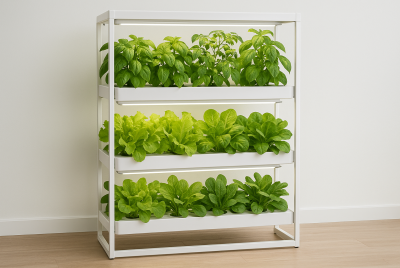Fertilizer for Hydroponics: Nourishing Plants, Inspiring Growth
We may earn a commission for purchases made using our links. Please see our disclosure for more details.
If you’ve ever admired a wall of vibrant hydroponic lettuce or watched tomato vines stretch skyward in a nutrient-rich mist, you’ve seen the magic hydroponics can offer. But that magic can fade quickly if the right fertilizer for hydroponics is missing. I learned this the hard way. I thought water and light would be enough. Instead, my plants struggled, their leaves turned pale, and growth slowed. In hydroponics, fertilizer is not a luxury. It is the lifeline that delivers every essential nutrient your plants need to thrive. Once I found the right formula, my garden came alive. Now I’m here to share how you can enjoy that same lush, healthy growth in your own system.
Hydroponic Nutrients Formula: The Foundation of Growth
In hydroponics, fertilizer can be considered as your plant’s entire diet. Plants in soil can occasionally scavenge nutrients that are lacking in their environment. However, in a hydroponic system, you serve as the delivery person, chef, and nutritionist all at once.
The main elements—Nitrogen (N), Phosphorus (P), and Potassium (K)—work like the macronutrients in a human diet:
- Nitrogen (N) is like protein—it builds leafy green growth.
- Phosphorus (P) acts like healthy fats—fueling roots, flowers, and seeds.
- Potassium (K) is the carbohydrate powerhouse—driving energy transfer, disease resistance, and overall plant vigor.
However, having only these three is not enough. Plants require micronutrients such as iron, manganese, zinc, and copper, which function similarly to vitamins in our diets. In hydroponics, several fertilizers give them in chelated form, which preserves the nutrients and keeps them available to the plant even when pH levels change significantly.
💡 Pro tip: If you’re new, start with a reputable complete nutrient formula like General Hydroponics FloraPro or Jacks Hydroponic 5-12-26—they take out the guesswork and keep your plants consistently nourished.
Natural Fertilizer for Hydroponics: Can You Go Organic?
The idea of growing food without chemicals appeals to many of us. But in hydroponics, “organic” fertilizer can be tricky. The main challenge is solubility—many natural fertilizers aren’t water-soluble, which can clog pumps or drip lines.
That said, there are ways to incorporate natural elements:
- Liquid Seaweed Extract: Packed with growth hormones and trace minerals, it strengthens plants and helps them recover from stress.
- Fish Emulsion: A gentle nitrogen source—effective but a bit aromatic (keep that in mind for indoor setups!).
- Compost Tea: Great for certain systems, but must be filtered thoroughly to avoid blockages.

Water-Soluble Fertilizer for Hydroponics: Instant Plant Power
If organic fertilizers are like slow-cooked meals, water-soluble fertilizers (WSF) are the express delivery service—fast, efficient, and direct. A quality water-soluble fertilizer for hydroponics dissolves fully, delivering nutrients instantly to your plants.
Why WSF is the gold standard in hydroponics:
- Dissolves fully in water, so plants can absorb nutrients instantly.
- Offers precise control over nutrient ratios.
- Works in every hydroponic system type—from deep water culture (DWC) to nutrient film technique (NFT).
Top choices among growers:
- General Hydroponics Flora Series – A three-part formula that lets you tweak nutrients based on plant growth stage.
- MasterBlend 4-18-38 – Popular for tomatoes and peppers.
- Jacks 5-12-26 – Reliable for leafy greens and herbs.
Hydroponic Fertilizer for Indoor Plants
Indoor hydroponics means your plants live in a controlled world—you decide every factor, from lighting to air circulation to nutrient delivery.
For leafy greens and herbs:
- A balanced NPK like 20-20-20 or 15-15-15 works beautifully in the vegetative stage.
For flowering or fruiting plants:
- Switch to something higher in phosphorus and potassium, like 10-20-20, once buds form.
Monitoring tools you’ll need:
- pH Meter – Keep pH between 5.5–6.5 for most plants.
- EC (Electrical Conductivity) Meter – Prevents over- or underfeeding by measuring nutrient strength.
Choosing the Right Fertilizer: Three-Step Process
After years of trial and error, I’ve narrowed down my fertilizer selection method:
- Identify plant type and stage:
Leafy greens crave nitrogen; fruiting plants need more phosphorus and potassium. - Match your hydroponic system:
NFT and DWC may require different nutrient strengths due to water flow rates and oxygen levels. - Check your water source:
If you have hard tap water, it may already contain calcium and magnesium—meaning you might not need as much in your fertilizer mix.
Fertilizer is only one part of the equation when it comes to thriving plants. The way you arrange and pair your crops can also have a huge impact on their health and productivity. The right fertilizer for hydroponics depends on your crop type, system design, and water quality. Many growers combine smart nutrient management with companion planting techniques to naturally boost growth, reduce pests, and even enhance flavor—even in controlled hydroponic environments.
Top Fertilizers & Essential Tools
1. General Hydroponics Flora Series (3-Part Nutrient System)
A trusted, versatile formula for beginners and pros—lets you adjust nutrients for each growth stage.
2. Jacks Nutrients 5-12-26 Hydroponic Formula
Excellent for leafy greens, herbs, and fruiting plants with precise water-soluble nutrients.
3. MasterBlend 4-18-38 Complete Kit
Perfect for tomatoes, peppers, and other fruiting crops; comes with calcium nitrate and magnesium sulfate.
4. General Hydroponics FloraPro
A professional-grade fertilizer with chelated micronutrients for consistent nutrient availability.
5. Advanced Nutrients pH Perfect Micro, Grow, Bloom
Automatically balances pH—ideal for those who want to simplify nutrient management.
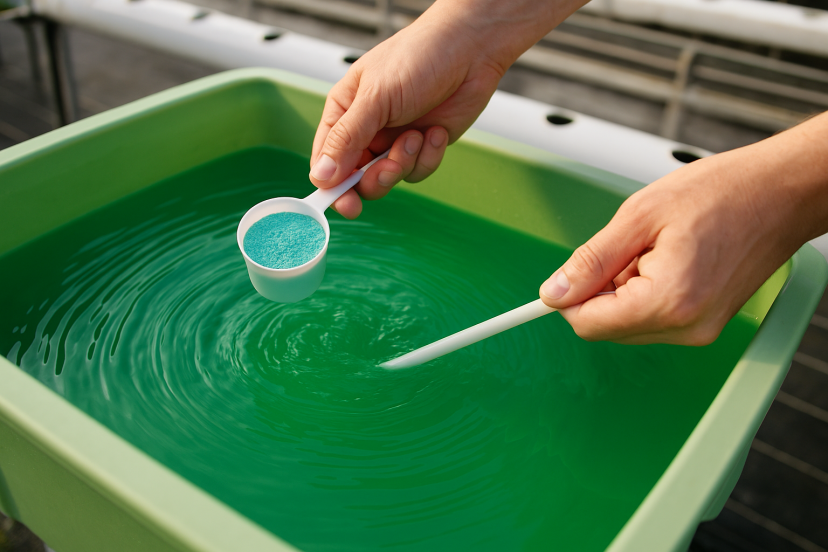
Understanding NPK Ratios
When you look at a fertilizer bag labeled 10-10-10, it’s telling you the percentage by weight of nitrogen, phosphorus, and potassium. Think of it like reading a nutrition label.
- High nitrogen (20-10-10) → Strong leafy growth.
- Balanced (15-15-15) → General all-purpose maintenance.
- High phosphorus & potassium (10-20-20) → Flowering and fruiting stage.
In hydroponics, there’s no soil buffer, so the wrong NPK ratio shows its effects faster—both good and bad.
Ammonium vs. Nitrate
Here’s something I wish I’d known sooner: not all nitrogen is created equal.
- Ammonium nitrogen can cause rapid growth spurts but may lead to toxic buildup.
- Nitrate nitrogen is safer for hydroponics—plants can store it and use it as needed.
Most high-quality hydroponic fertilizers rely primarily on nitrate nitrogen for this reason.
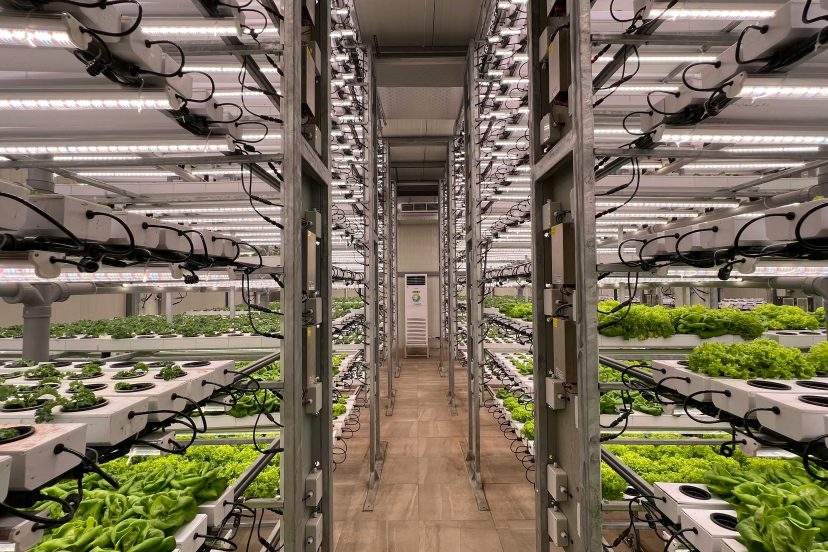
Managing Salt Levels for a Thriving Hydroponic System
Over time, salts from fertilizers can build up in your system, especially in recirculating setups. This can cause nutrient lockout, where plants can’t absorb certain minerals even if they’re present.
How to prevent it:
- Every 2–3 weeks, flush your system with plain water.
- Keep an eye on EC levels; sudden spikes may indicate salt buildup.
Why pH is the Key to Unlocking Plant Nutrition
Even the perfect fertilizer won’t help if your pH is wrong. For most hydroponic plants:
- Ideal range: 5.5 to 6.5
- Outside this range, nutrients like iron and manganese become unavailable to the plant.
Keeping the correct pH and electrical conductivity in a hydroponic system is essential for plants to absorb nutrients effectively, as explained in Oklahoma State University’s EC and pH guide for hydroponics. This aligns with recent findings from a 2023 scientific study on nutrient solution pH and concentration effects in leafy vegetables, which showed that both high pH and low nutrient strength can significantly reduce plant growth and quality. Together, these resources highlight the importance of precise fertilizer management to achieve optimal yields in hydroponic systems.
Quick tip: Check pH daily, especially in small systems where fluctuations happen quickly.
Final Thoughts
Mixing fertilizer isn’t just a chore—it’s a ritual. It’s like preparing a nourishing meal for a loved one. Every measurement, every stir, every adjustment is your way of saying, “I want you to thrive.” In hydroponics, the right fertilizer turns potential into produce, effort into abundance, and curiosity into confidence. Whether you’re tending a countertop herb garden or managing a full-scale farm, remember: fertilizer is the bridge between your vision and your harvest.
FAQ
Q: What fertilizer is used in hydroponics?
A: Most growers choose complete water-soluble fertilizers with a balanced NPK and chelated micronutrients, like General Hydroponics Flora Series.
Q: Is NPK 20/20/20 suitable for hydroponics?
A: Yes, as long as it’s fully water-soluble and you monitor pH and EC levels.
Q: How to fertilize hydroponic plants for beginners?
A: Use a complete hydroponic nutrient mix, follow the manufacturer’s instructions, and maintain pH between 5.5–6.5.
Q: Do you need to add fertilizer to hydroponics?
A: Absolutely. Without soil, plants depend entirely on nutrient solutions for growth.
Q: How frequently should hydroponic plants be fertilized?
A: In most systems, nutrients are continuously supplied. Replace the nutrient solution every one to two weeks to avoid nutrient imbalances and keep plants healthy.

